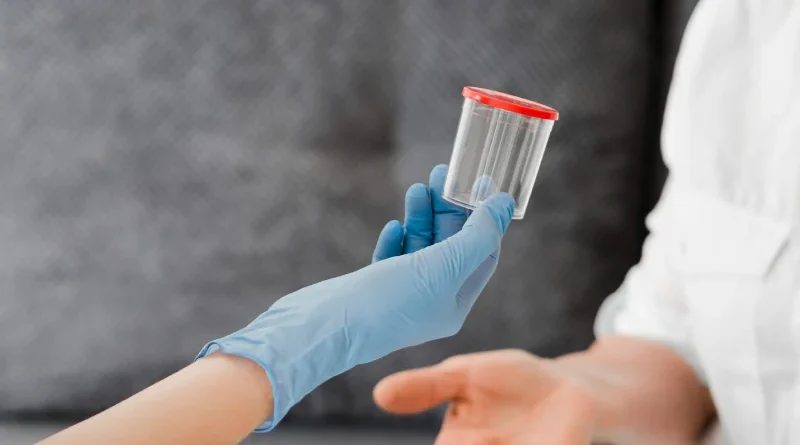Male Fertility Test: How Semen Analysis Can Help You Conceive
Male infertility is a significant factor in nearly 50% of infertility cases worldwide, yet it is often overlooked. Semen analysis is a crucial diagnostic test that evaluates sperm health, helping doctors determine if male reproductive issues are affecting conception.
This test is a non-invasive, simple, and effective way to assess sperm quality and guide couples toward the appropriate fertility treatments if needed. By measuring factors like sperm count, motility, morphology, semen volume, and pH levels, semen analysis provides insights into a man’s reproductive potential.
In this guide, we will explore:
✅ What semen analysis is and why it is important
✅ The step-by-step process of semen testing
✅ Key parameters analyzed and their significance
✅ How to interpret results and what abnormal findings mean
✅ Next steps if the results indicate fertility issues
(Source: American Urological Association)
What is Semen Analysis?
Semen analysis is a laboratory test that evaluates the quantity and quality of sperm in a man’s semen. It is primarily used to assess:
- Male fertility potential – Determines whether sperm parameters meet the requirements for natural conception.
- Success of fertility treatments – Used before procedures like IUI (Intrauterine Insemination) or IVF (In Vitro Fertilization) to select the best reproductive approach.
- Post-vasectomy results – Confirms whether sperm is still present in semen after a vasectomy.
- Underlying medical conditions – Detects infections, hormonal imbalances, or structural issues affecting sperm production.
A semen sample is collected and analyzed under a microscope to assess sperm concentration, motility, shape, and other key factors affecting male fertility.
(Source: Mayo Clinic)
Who Should Get a Semen Analysis?
Semen analysis is recommended for:
1. Couples Struggling to Conceive
If a couple has been trying for over 12 months (or 6 months if the woman is over 35) without success, male fertility should be evaluated. Since male infertility accounts for 40-50% of cases, early testing helps determine if sperm quality is a contributing factor.
2. Men with Medical Conditions Affecting Fertility
Certain conditions like varicocele (enlarged veins in the testicles), diabetes, infections, hormonal imbalances, or past surgeries can impair sperm production and function. A semen analysis helps detect abnormalities caused by these conditions.
3. Lifestyle Risk Factors
Men who smoke, consume excessive alcohol, have a poor diet, experience high stress, or have been exposed to environmental toxins (like pesticides or radiation) may have reduced sperm quality. A semen analysis can reveal whether lifestyle factors are impacting fertility.
4. Post-Vasectomy Check
After a vasectomy, a semen analysis is performed to confirm that no sperm are present in the semen, ensuring the procedure was successful in preventing pregnancy.
(Source: World Health Organization (WHO))
How to Prepare for a Semen Analysis?
Proper preparation is essential to ensure accurate and reliable results.
1. Abstain from Ejaculation for 2-5 Days
Men are advised to avoid ejaculation for at least 2-5 days before the test. This ensures a higher sperm concentration in the sample, providing a more accurate assessment of sperm health.
2. Avoid Alcohol, Caffeine, and Tobacco
Excessive alcohol, caffeine, and smoking have been linked to poor sperm motility and DNA fragmentation. Avoiding these substances before testing ensures better sperm quality in the sample.
3. Maintain Hydration and a Balanced Diet
Proper hydration and a nutrient-rich diet with vitamins like zinc, folic acid, and antioxidants support optimal sperm production. Dehydration can reduce semen volume and concentration.
4. Avoid Hot Baths and Saunas
Exposure to excessive heat from hot tubs, saunas, or laptops placed on the lap can negatively affect sperm production. Sperm thrive at a lower temperature than the body’s core temperature, so avoiding heat sources before testing is recommended.
5. Inform the Doctor About Medications
Certain medications, including antibiotics, steroids, and hormonal drugs, can impact sperm health. Letting the doctor know about any prescribed medications ensures the test results are properly interpreted.
(Source: Harvard Medical School)
Semen Analysis Process: Step-by-Step
1. Sample Collection
- The semen sample is collected through masturbation into a sterile container at a clinic or at home.
- If collected at home, it must be delivered to the lab within 30-60 minutes and kept at body temperature to prevent sperm degradation.
- In cases where masturbation is not an option, a special collection condom can be used during intercourse.
2. Laboratory Analysis
Once received, the sample undergoes microscopic evaluation and advanced laboratory tests, including:
- Sperm concentration, motility, and morphology assessment
- Semen pH and white blood cell detection
3. Report Generation
The results are typically available within 1-3 days, depending on the clinic or lab.
(Source: National Institute of Health (NIH))
What is Analyzed in a Semen Analysis?
1. Sperm Count (Concentration)
Measures the number of sperm per milliliter of semen.
- Normal range: 15 million – 200 million sperm per mL
- Low sperm count (<15 million/mL), known as oligospermia, reduces fertility chances.
2. Sperm Motility (Movement Ability)
- Refers to how well sperm move toward the egg.
- Normal range: At least 40% of sperm should be motile.
- Poor motility (asthenozoospermia) can hinder natural conception.
3. Sperm Morphology (Shape and Structure)
- Evaluates size and shape under a microscope.
- Normal range: At least 4% of sperm should have a normal shape.
- Teratozoospermia (abnormal sperm shape) can prevent fertilization.
(Source: WHO Semen Analysis Guidelines)
Next Steps if Semen Analysis Results Are Abnormal
If results indicate fertility issues, doctors may recommend:
1. Lifestyle Modifications
- Quitting smoking, alcohol, and drug use.
- Eating a diet rich in omega-3s, antioxidants, and zinc.
- Maintaining a healthy weight and exercising.
2. Supplements & Medications
- Coenzyme Q10, vitamin C, and folic acid can improve sperm quality.
- Hormonal therapy may be prescribed for men with low testosterone.
3. Advanced Fertility Treatments
- IUI (Intrauterine Insemination) – Directly places sperm in the uterus.
- IVF + ICSI – Fertilization using Intracytoplasmic Sperm Injection for severe cases.
(Source: Cleveland Clinic)
Final Thoughts
Semen analysis is a critical test for evaluating male fertility, offering insights into sperm count, motility, morphology, and overall reproductive health. If results indicate abnormalities, lifestyle modifications, medications, or fertility treatments can improve sperm quality.If you’re planning for a baby or experiencing fertility concerns, consult a fertility specialist for personalized treatment options.



